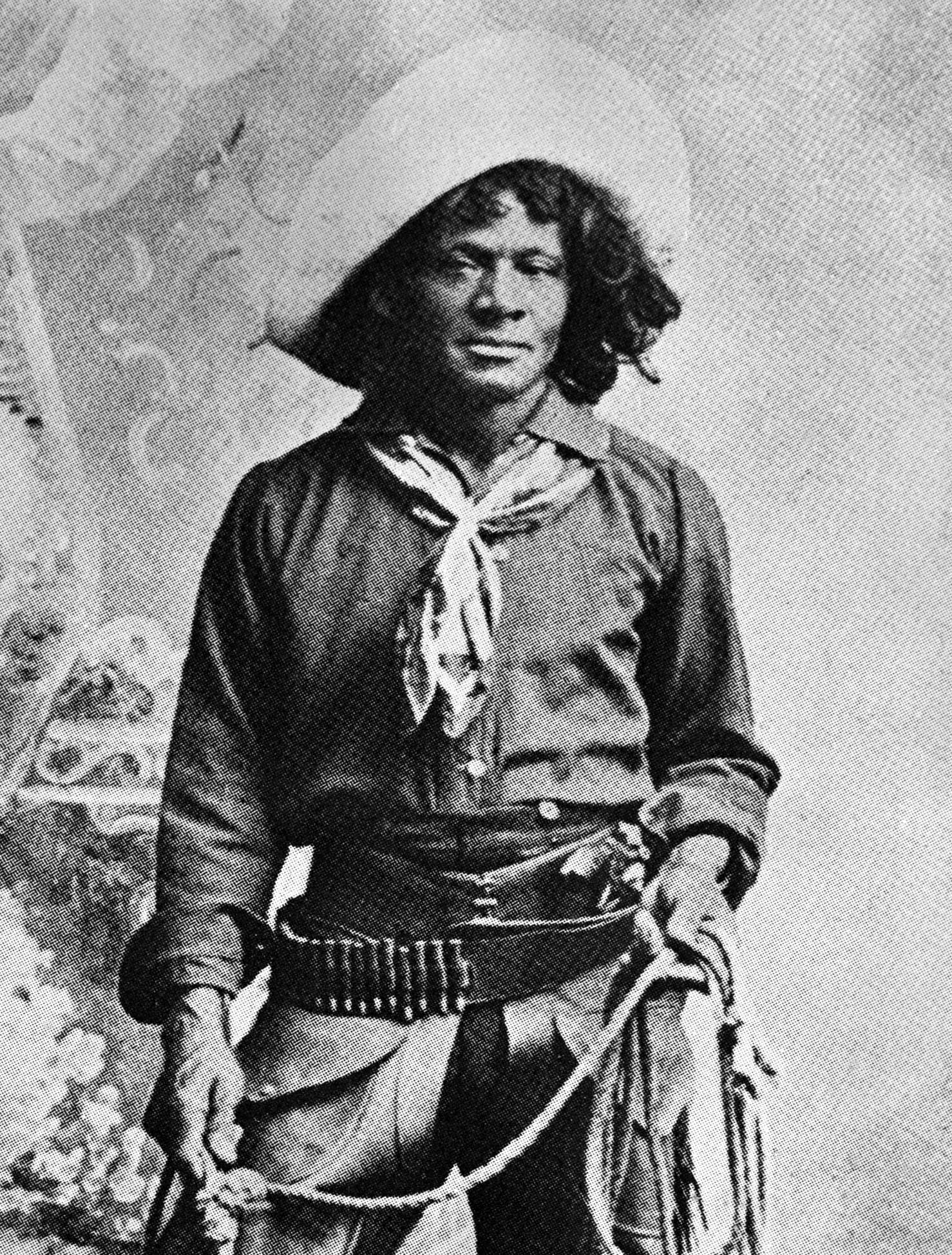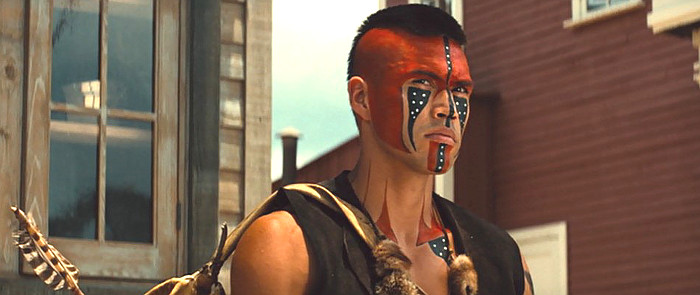Update: MTV announced that David Oyelowo will star in the spinoff limited series 1883: The Bass Reeves Story, which is a spinoff to 1883, which in turn, is a prequel to Yellowstone. Bass Reeves is mentioned in this article and it is great to see that a major studio is committing to his story with an acclaimed actor in the lead role.
Original story follows.
I recently sat down and watched the 2016 remake of The Magnificent Seven, starring Denzel Washington and Chris Pratt. It was the first time I had rewatched the movie since it came out in the cinema and watching the movie again proved to be a great experience. The film is a lot better than I remembered. Tight directing, a great final score from James Horner and a solid cast. Denzel Washington stars as Sam Chisolm, an African-American working as a warrant officer for the US Marshals. At first glance, this may seem like an unusual casting choice. Western cinema will have the viewer believe that the American frontier was operated entirely by caucasian men. But if we take a look through history, we’ll find that Hollywood wasn’t exactly being honest in its depiction of the real west.
Whitewashing the West
The Smithsonian estimates that one in four cowboys during the wild west were African-American. When I saw that article, I had to do a double-take. That was a much higher number than I was expecting. That was probably due to the way African Americans have been portrayed in the Western genre. That is to say, they’re usually not portrayed at all. This is an interesting statement in itself, as the Western genre usually takes place after the Civil War and the Emancipation Proclamation. Freed from the bondage of slavery, many former slaves would have sought some form of employment, but finding decent work still wasn’t easy for them. Shows like Hell on Wheels showed that companies like the Union Pacific used former slaves to work in “the cut” during the assembly of the transatlantic railroad. But one could argue that this kind of work would be the same kind of backbreaking labor that they would have done as slaves, only this time they’re being paid the bare minimum.

Others did go on to find better jobs than this, and law enforcement was one such profession. It offered better wages and a level of respect, and even fear, that one wouldn’t find in most other civilized professions. Individuals like Bass Reeves have all but been removed from the conversation that is history, but the character was the inspiration for The Lone Ranger says historian Art T. Burton. Nat Love, pictured above, worked as a cowboy and brushed shoulders with the likes of Billy the Kid and Bat Masterson. So seeing a Black man ride up on a horse, armed with a pistol and working as a US Marshal in The Magnificent Seven may seem unusual to us, but it wasn’t as unusual as it may have seemed at the time. The townspeople in that particular scene from The Magnificent Seven still looked on with concern, confusion, or even hate. Just because the profession awarded authority, didn’t mean the people respected it. The change will often be met with resistance.

So why didn’t the classic Western genre showcase more diversity in their stories, especially during their heyday in the 1950s and 60s? Well, I think you can probably guess the answer to that. Whitewashing history has been a critical problem in history, and the western genre for some reason has heavily rewritten history. It has done so to such a point that people of color cast in period Westerns seemingly stand out.
Diversity in ‘The Magnificent Seven’
The remaining five members of the titular Magnificent Seven are much more varied ethnically than the original 1960 version (which in turn was a remake of Seven Samurai) as director Antoine Fuqua wanted to make a film that was quite diverse for the genre, but not particularly diverse historically. He may not have intended to make a film about race, and let’s be plain, he didn’t, but he did make a movie that shook up the status quo by being more in tune with history.
Sure, many of the other characters don’t get much character development considering the runtime, but everyone does get their moment. Often portrayed as the “other” Westerns, the first recruit is Manuel Garcia-Ruflo’s Vasquez, a Mexican outlaw on the run. From there, it’s on up to recruit Ethan Hawke’s Midnight Robicheaux, a decorated sharpshooter from the war who suffers from PTSD. Coming with him is Byung-hun Lee’s Billy Rocks, a Chinese assassin who travels with Midnight (and has the best name in this movie). Vincent D’Onofrio’s portrayal of Jack Horne was something of a mixed bag as a lumbering mountain man whose time away from civilization caused him to speak unusually. Rounding out the seven is Martin Sensmeier as Red Harvest, a Camanche living in exile from his tribe. First Nation characters are often portrayed as a threat to “civilization” in Westerns, but The Magnificent Seven decides to break away from the stigma. Bringing this vision to life was Antoine Fuqua, perhaps best known for directing Denzel and Hawke in Training Day. Emma Cullen was also not portrayed as a “damsel in distress”, as would have been a common trope in the genre back in the day.

Diversity in ‘Red Dead Redemption’
The Magnificent Seven isn’t the only story told over the past few years that have taken aims at rectifying Hollywood’s reimagining of history. The acclaimed video game Red Dead Redemption 2 may have gotten a lot of praise for its story and gameplay, but we should also shine a light on how it portrayed race in a decidedly difficult time in history.

Red Dead Redemption 2‘s protagonist Arthur Morgan is part of the Van der Linde gang, a group of outlaws and thieves on the run after a botched job. But the group isn’t made up of a bunch of fair-skinned ruffians you’d probably see on the big screen. There’s the mixed-raced Charles Smith, who is half Native American and half African American and finds himself something of an outcast amongst both groups. Lenny is an African-American whose parents were former slaves. The group plays host to a variety of women too, from Tilly to Mary-Beth to Sadie Adler, and each is different from the last, some are with the group more for security and shelter, some as active participants in tasks like thievery and murder. Regardless, the game paints a tapestry composed of a wide variety of people from many creeds, each with their motivations for traveling the land with a group of outlaws in the final days of the wild west.

Changing Things Up In ‘The Harder They Fall’
We’re now at a point where the Western genre is starting to explore new, and previously unthinkable, stories not possible in the heydey of the genre. Films like Netflix’s The Harder They Fall is an African American revisionist history western inspired by real events and cowboys, but like Hamilton, changed the skin tone of all the characters in the story. The movie is pretty conscious of how it remixes history and British director Jeymes Samuel wears this fact on his sleeve when talking about the movie:
The frustrating thing was the vantage point they were shown through,” he says. “If you were a woman you were subservient in some way, and if you were of any ethnicity other than white you were treated as less than human. I still love those movies, [but] everything we learnt about westerns was skewed.”
Hopefully, we’ll come to a day where we see the period Western genre through the prism of history versus the guise of bias and that the casting of an African American in the lead of a movie won’t cause an uproar. I’m sure there are many who think they know the real history thanks to the abundance of media released over the years that have painted a very distinct picture, but as we peel back the layers a bit, we learn that history has not been kind to those seen as “other” in the western genre. Maybe one day we’ll get a major Hollywood movie about Bass Reeves that sticks the landing.
